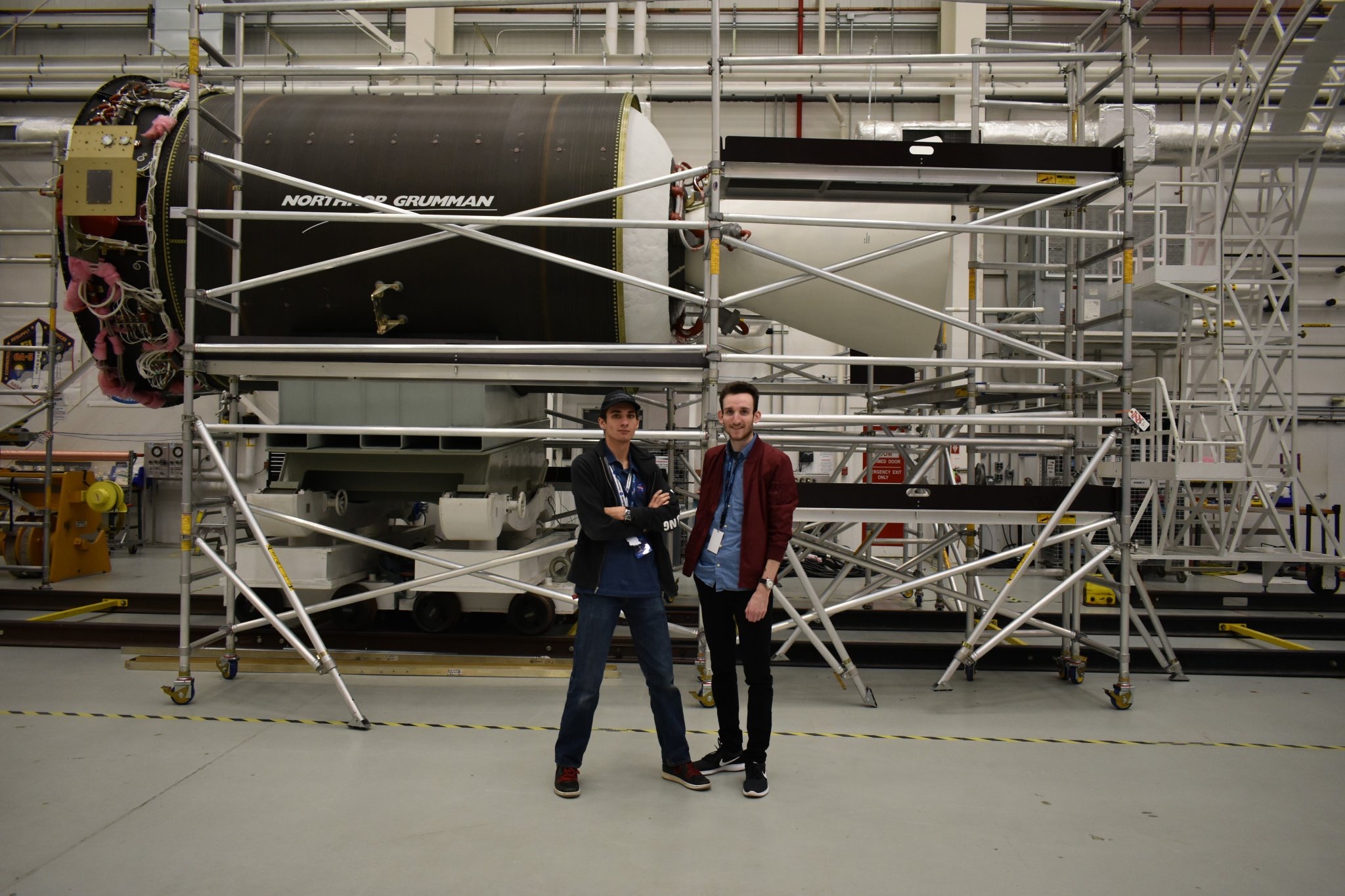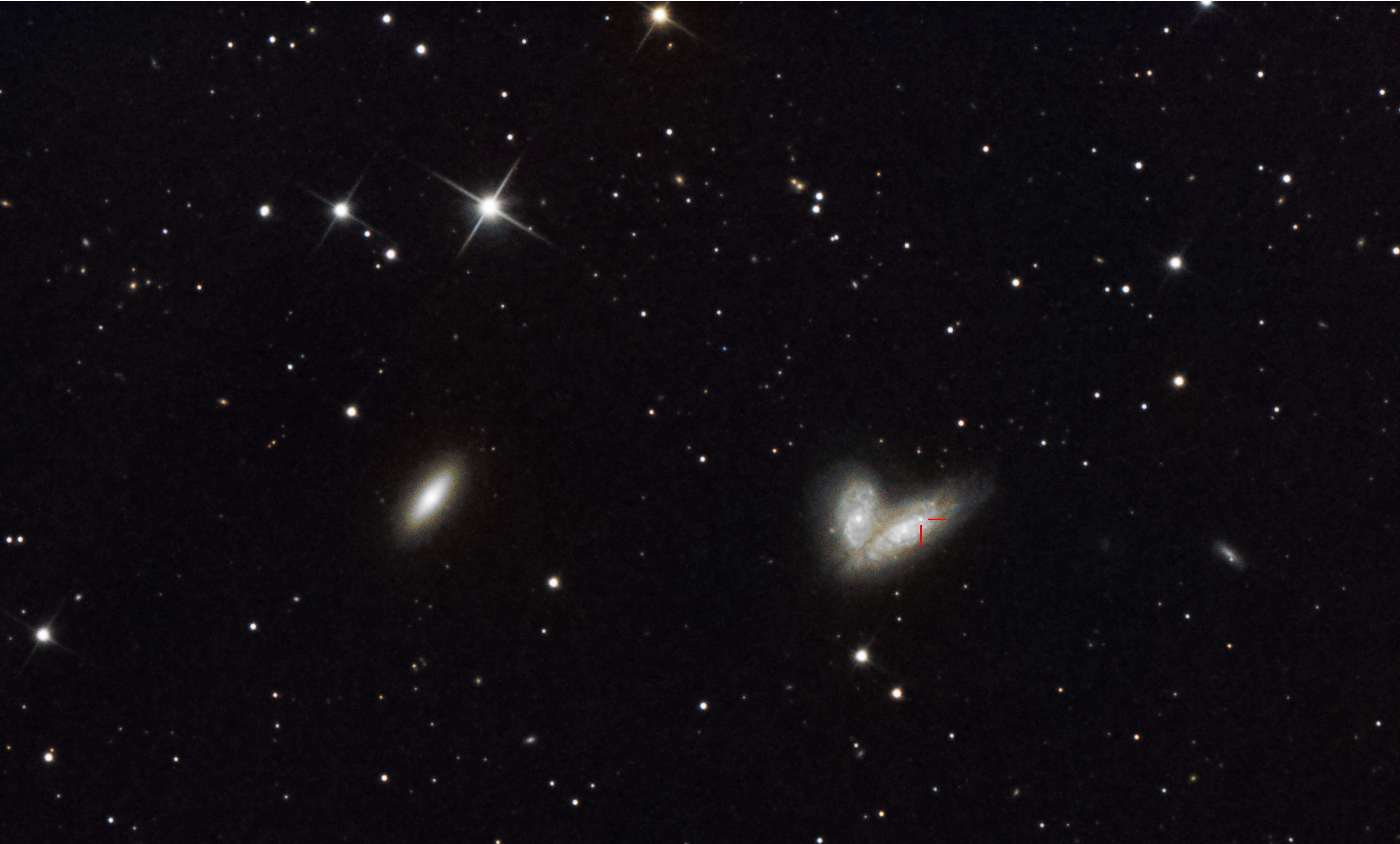It's kind of strange to think, in the light polluted depths of my suburban back garden, that I'd ever be able to see more than a few of the brightest stars on a clear night. Many people rarely look up at the stars. If they do, they may live in an area more light polluted than my hometown in Oxfordshire and would see even less of the universe rotating above our heads. As it turns out, reality is much more forgiving - the universe makes itself quite observable, even from behind the skyglow that comes from our towns and cities.
I'm a space instrument electronics engineer but while I was at university, I wasn't especially interested in working in the space sector. Then in December 2014 I saw NASA launch the Orion EFT-1 mission at Cape Canaveral. After seeing that launch, it was like a switch had flipped and I decided I wanted to contribute to the space industry, developing the cutting edge technology. Fast forward to the present day and I'm a second year graduate engineer at RAL Space working on important solar missions, PUNCH and Lagrange, for two major space agencies!
 Between then and now, I've had the opportunity to network with people from across the world in a similar position to myself. Many of them were students making their first steps in the space industry as interns or placement students. Some of them were amateurs, working on machining bodies for 5cm-cube picosatellites from their garden sheds, or building hybrid rocket engines in their backyard. We all shared a dream of going further in the space industry (and now, most of us have!) and ended up creating a website to showcase some of our personal projects and achievements in one place.
Between then and now, I've had the opportunity to network with people from across the world in a similar position to myself. Many of them were students making their first steps in the space industry as interns or placement students. Some of them were amateurs, working on machining bodies for 5cm-cube picosatellites from their garden sheds, or building hybrid rocket engines in their backyard. We all shared a dream of going further in the space industry (and now, most of us have!) and ended up creating a website to showcase some of our personal projects and achievements in one place.
Naturally, this got a bit out of hand, and we started collaborating on major projects together in the hope of achieving something awesome with very little funding – purely for innovation! We called ourselves The Flame Trench, a name coming from many of our interests in amateur rocketry, and a few years on, some of these projects have come to fruition.
 One of these collaborative projects is Gaze - an attempt to build a robotic, automated telescope for astrophotography, outreach, and citizen science. Gaze is mostly crowdfunded so that we can buy decent astronomy gear and as a result, we're in the process of giving our supporters access to be able to do their own astrophotography using our setup, currently housed in my back garden! We had First Light (our first observations) in February this year, and the last couple of months have been a whirlwind of tuning equipment and fixing bugs to get it running precisely enough to take photos of over 7 minutes exposure; longer exposure allows us to capture fainter objects in the night sky.
One of these collaborative projects is Gaze - an attempt to build a robotic, automated telescope for astrophotography, outreach, and citizen science. Gaze is mostly crowdfunded so that we can buy decent astronomy gear and as a result, we're in the process of giving our supporters access to be able to do their own astrophotography using our setup, currently housed in my back garden! We had First Light (our first observations) in February this year, and the last couple of months have been a whirlwind of tuning equipment and fixing bugs to get it running precisely enough to take photos of over 7 minutes exposure; longer exposure allows us to capture fainter objects in the night sky.
Although light pollution makes it hard to see much with the naked eye, the results we've had from Gaze are incredible - and this is just with a basic DSLR camera. We've got plans to upgrade to a narrowband capable, monochrome camera, which means we could take pictures of very specific wavelengths of light. This will let us take genuinely stunning images of galaxies and nebulae in the same colour palette and spectrum bands as some of the most famous images produced by the Hubble Telescope. (Although, admittedly, probably not quite as good..!)
One of the main goals of the project is to contribute to citizen science, the practice of amateurs or members of the public contributing to major scientific studies and taking part in real research. There are several ways we're hoping to get involved - from scanning the sky for small asteroids, to following up major scientific missions to confirm the existence of exoplanets in orbit around distant stars. We've already been lucky enough to image a supernova, a huge, dying star violently exploding, in the Siamese Twins galaxy pair 60 million light years away.

We're also participating in an outreach initiative with the team behind the NASA New Horizons mission to Pluto and beyond. Along with similar communities across the globe, we have imaged the star Wolf 359 almost simultaneously with the spacecraft that is currently on the outer fringes of our Solar System, to complete a parallax measurement on a scale never before attempted. By combining the images taken from my back garden with those from the spacecraft, astronomers hope to demonstrate pure stellar parallax; a shift in the apparent position of stars as we view them from Earth. This can be used to determine accurate distances and locations of stars and even for interstellar navigation of spacecraft.
We can't wait to see what Gaze will get up to in the future, and are really looking forward to both contributing to possible scientific discoveries as well as sharing our astrophotography capabilities with the public.

Images:
1. Ben meeting up with friends collaborating on rocketry & space projects. Credit: The Flame Trench / Ben Cartwright.
2. A robotic telescope in Ben's back garden used for astrophotography and citizen science for the Gaze project. The Flame Trench / Ben Cartwright.
3. Gaze's observation of a supernova in the Siamese Twins galaxies. The Flame Trench / Ben Cartwright.
4. All scrolling images: The Flame Trench / Ben Cartwright.
